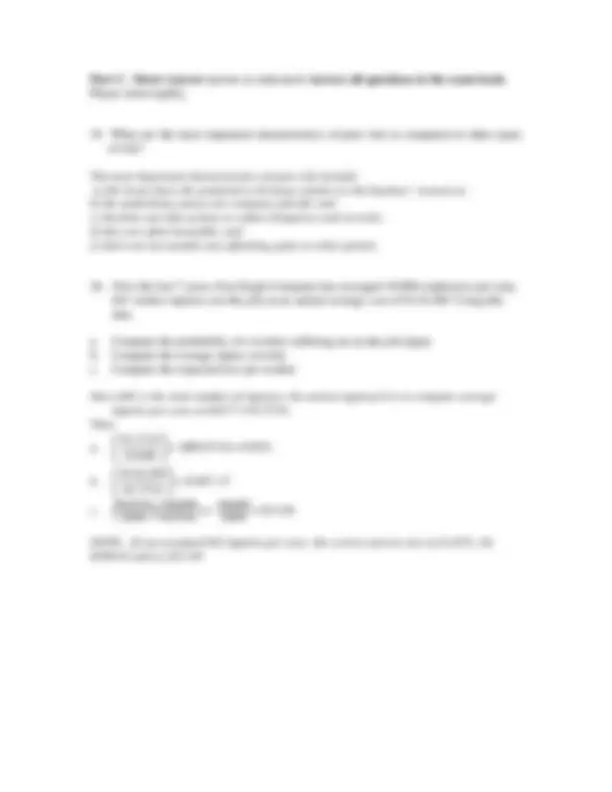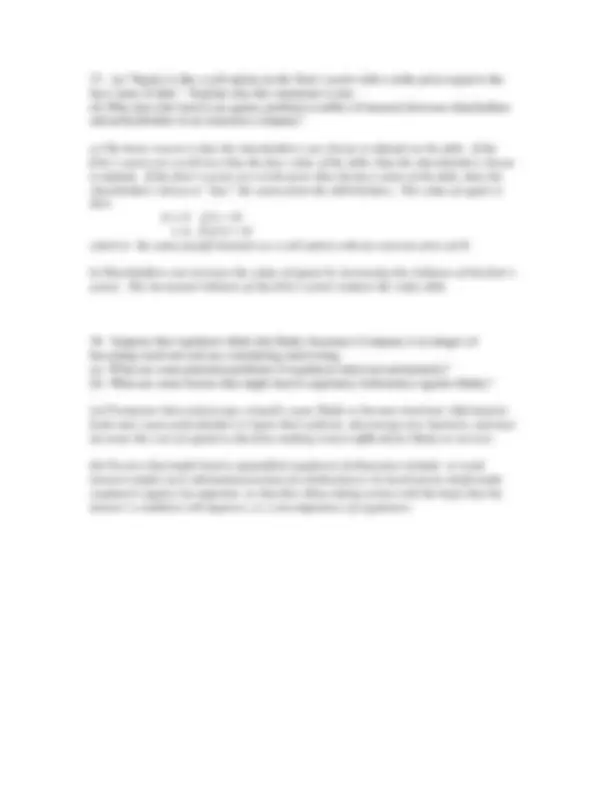




Study with the several resources on Docsity

Earn points by helping other students or get them with a premium plan


Prepare for your exams
Study with the several resources on Docsity

Earn points to download
Earn points by helping other students or get them with a premium plan
Community
Ask the community for help and clear up your study doubts
Discover the best universities in your country according to Docsity users
Free resources
Download our free guides on studying techniques, anxiety management strategies, and thesis advice from Docsity tutors
Material Type: Exam; Professor: Thistle; Class: Corporate Risk Management; Subject: Finance; University: University of Nevada - Las Vegas; Term: Fall 2009;
Typology: Exams
1 / 4

This page cannot be seen from the preview
Don't miss anything!



FIN 321 Prof. Thistle Corporate Risk Management Fall 2009
Write your name on the Scantron form and on the outside front cover of the exam book.
Part A. Multiple Choice. (2 pts. each) Write all answers on the Scantron form. For each question, choose the one alternative that best completes the statement or answers the question.
Part B: Fill-in (1 pt. each) Answer all questions in the exam book.
28 more
a) The basic reason is that the shareholders can choose to default on the debt. If the firm’s assets are worth less then the face value of the debt, then the shareholders choose to default. If the firm’s assets are worth more then the face value of the debt, then the shareholders choose to “buy” the assets from the debt-holders. The value of equity is then E = 0 if A < D = A - D if A > D which is the same payoff structure as a call option with an exercise price of D.
b) Shareholders can increase the value of equity by increasing the riskiness of the firm’s assets. The increased riskiness of the firm’s assets reduces the value debt.
(a) Premature intervention may actually cause Shaky to become insolvent. Information leaks may cause policyholders to lapse their policies, discourage new business, and may increase the cost of capital to the firm, making it more difficult for Shaky to recover.
(b) Factors that might lead to unjustified regulatory forbearance include: a) weak insurers might exert substantial pressure for forbearance; b) insolvencies might make regulators appear incompetent, so that they delay taking action with the hope that the insurer’s condition will improve; or c) incompetence of regulators.